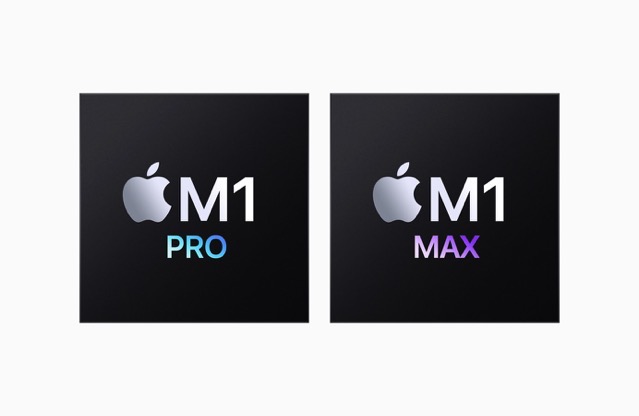
Deep Dive of M1 Pro and M1 Max Highlights Technical Improvements
AnandTech has posted a technical deep dive into the capabilities of Apple’s latest M1 Pro and M1 Max chips.

Reviews of Apple’s M1 Pro and M1 Max landed yesterday, and while most focused on the overall performance of the laptops, a new, in-depth review of the chips from Anandtech takes a more technical perspective.
The report notes that the new M1 Pro is a new implementation of the M1 chip and offers “mostly everything that power users will deem generationally important in terms of upgrades”:
The CPU cores clock up to 3228MHz peak, however vary in frequency depending on how many cores are active within a cluster, clocking down to 3132 at 2, and 3036 MHz at 3 and 4 cores active. I say “per cluster”, because the 8 performance cores in the M1 Pro and M1 Max are indeed consisting of two 4-core clusters, both with their own 12MB L2 caches, and each being able to clock their CPUs independently from each other, so it’s actually possible to have four active cores in one cluster at 3036MHz and one active core in the other cluster running at 3.23GHz.
On the other end the M1 Max is basically identical to the M1 Pro with the exception of the GPU and the media encoders:
The GPU and memory interfaces of the chip are by far the most differentiated aspects of the chip, instead of a 16-core GPU, Apple doubles things up to a 32-core unit. On the M1 Max which we tested for today, the GPU is running at up to 1296MHz – quite fast for what we consider mobile IP, but still significantly slower than what we’ve seen from the conventional PC and console space where GPUs now can run up to around 2.5GHz.
Anandtech ran a handful of synthetic benchmark tests pitting the Apple M1 Pro and M1 Max chips inside the new MacBook Pro against laptops powered by Intel’s flagship Core i9-11980HK and AMD Ryzen 9 (5980HS) processors.
In multi-core performance tests, both the Apple chips outperformed the Intel and AMD chips in synthetic workload simulations. While the M1 Pro proved to be a mixed bag against Intel and AMD’s best, the M1 Max reigned supreme over the competition, achieving 5x better scores in some scenarios.
Anandtech is of the opinion that the Cupertino company’s latest chips push the laptop computing envelope in pretty much every aspect:
On the CPU side, doubling up on the performance cores is an evident way to increase performance – the competition also does so with some of their designs. How Apple does it differently, is that it not only scaled the CPU cores, but everything surrounding them. It’s not just 4 additional performance cores, it’s a whole new performance cluster with its own L2. On the memory side, Apple has scaled its memory subsystem to never before seen dimensions, and this allows the M1 Pro & Max to achieve performance figures that simply weren’t even considered possible in a laptop chip.
The report concludes that the chips aren’t only able to outclass any competitor laptop design, but also competes against the best desktop systems out there, you’d have to bring out server-class hardware to get ahead of the M1 Max – it’s just generally absurd.”
Check out the entire deep dive over at Anandtech.

